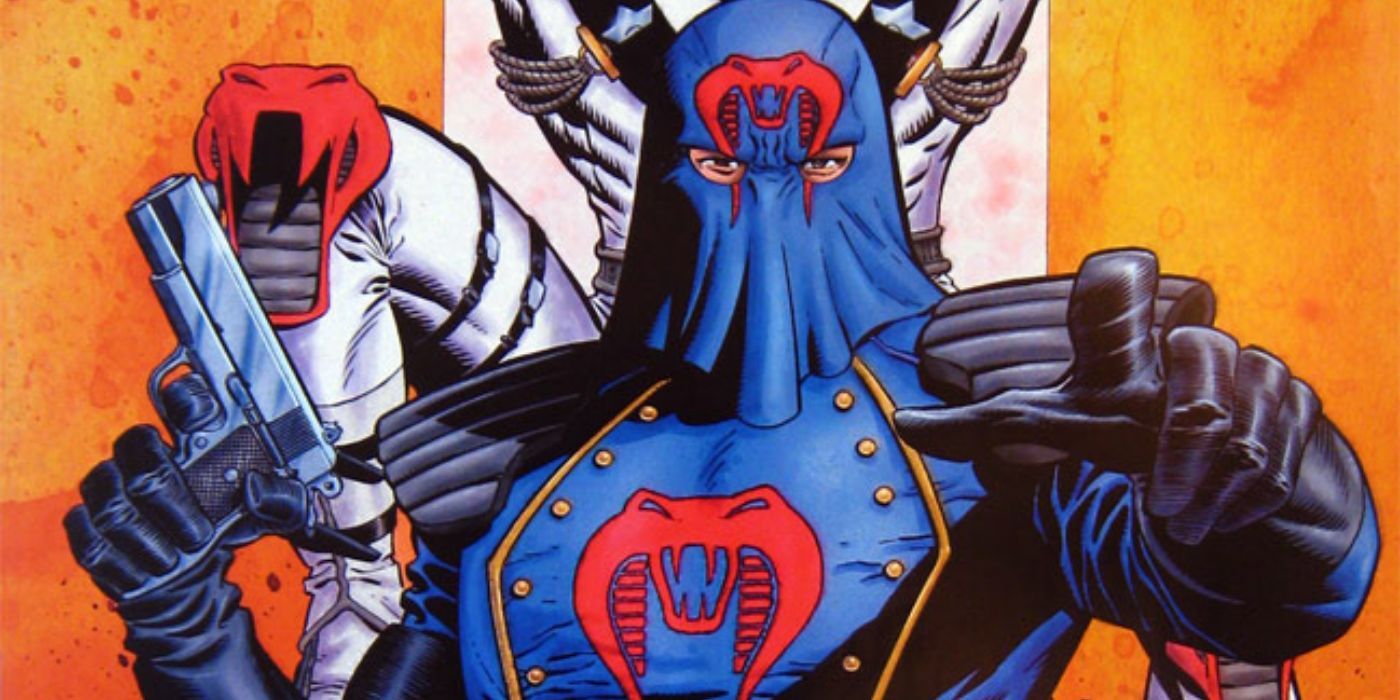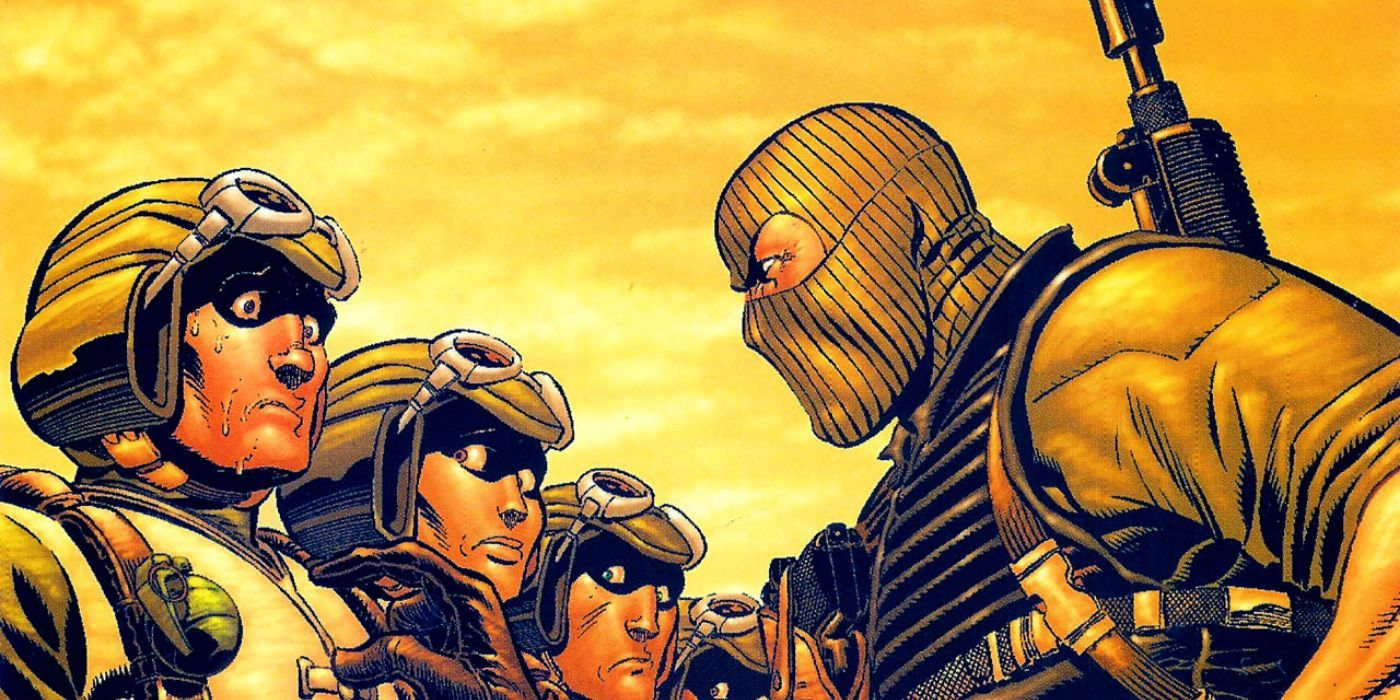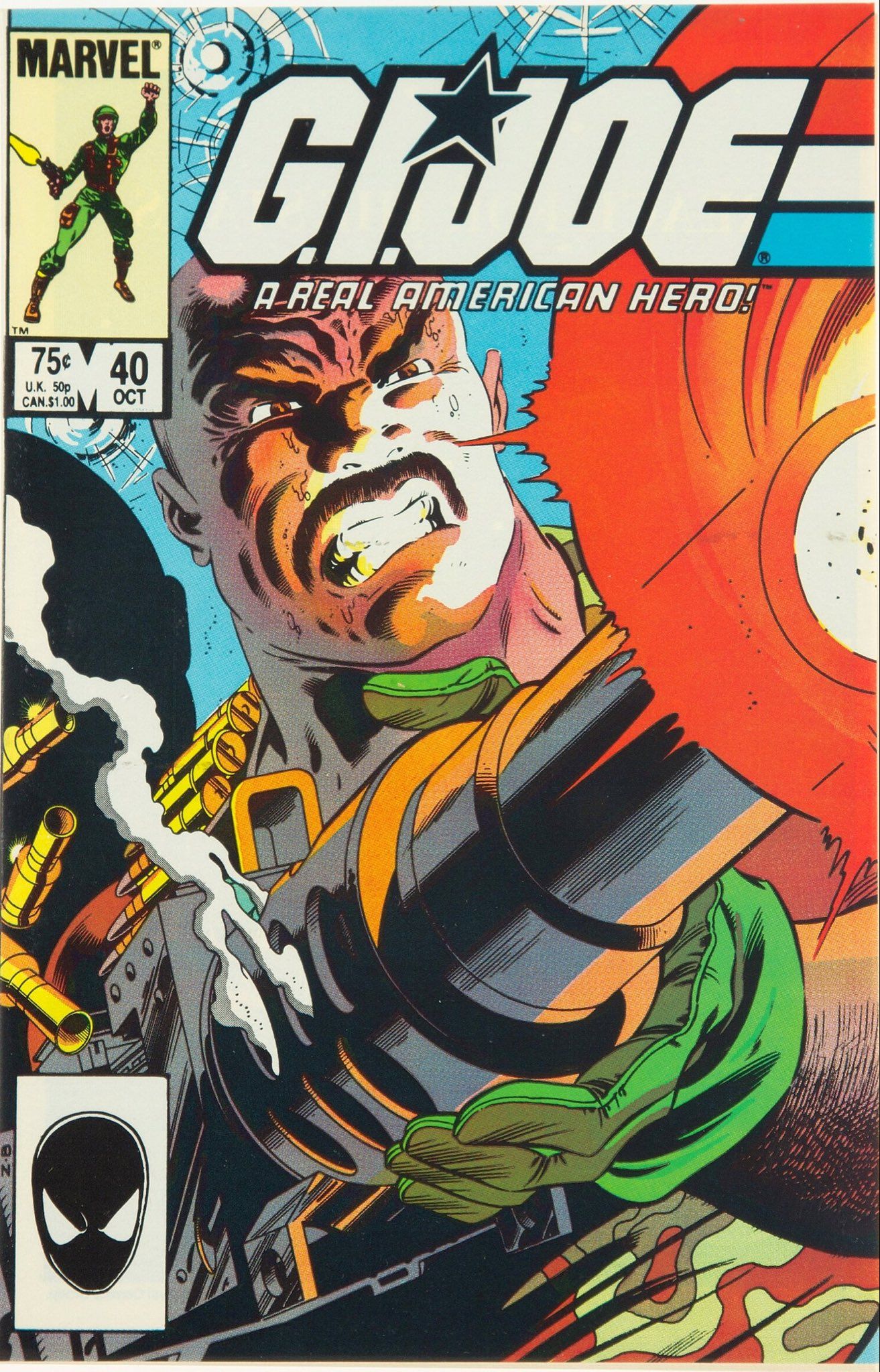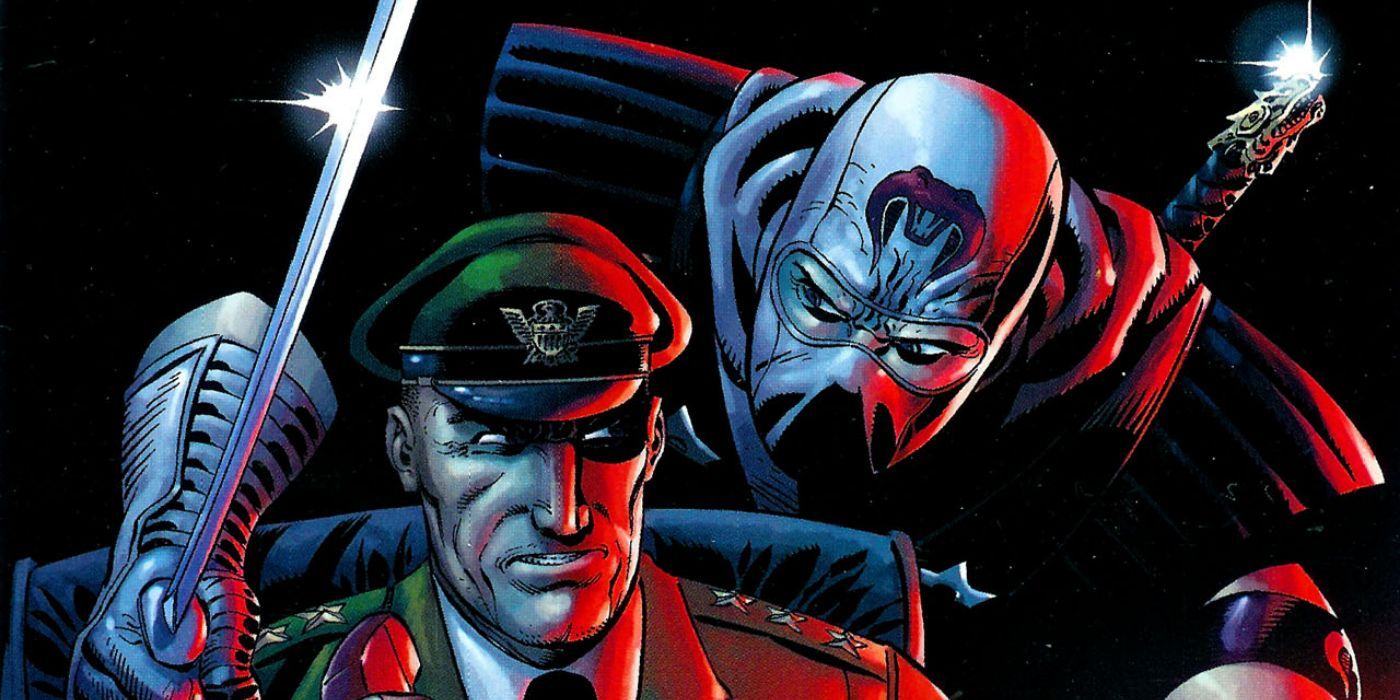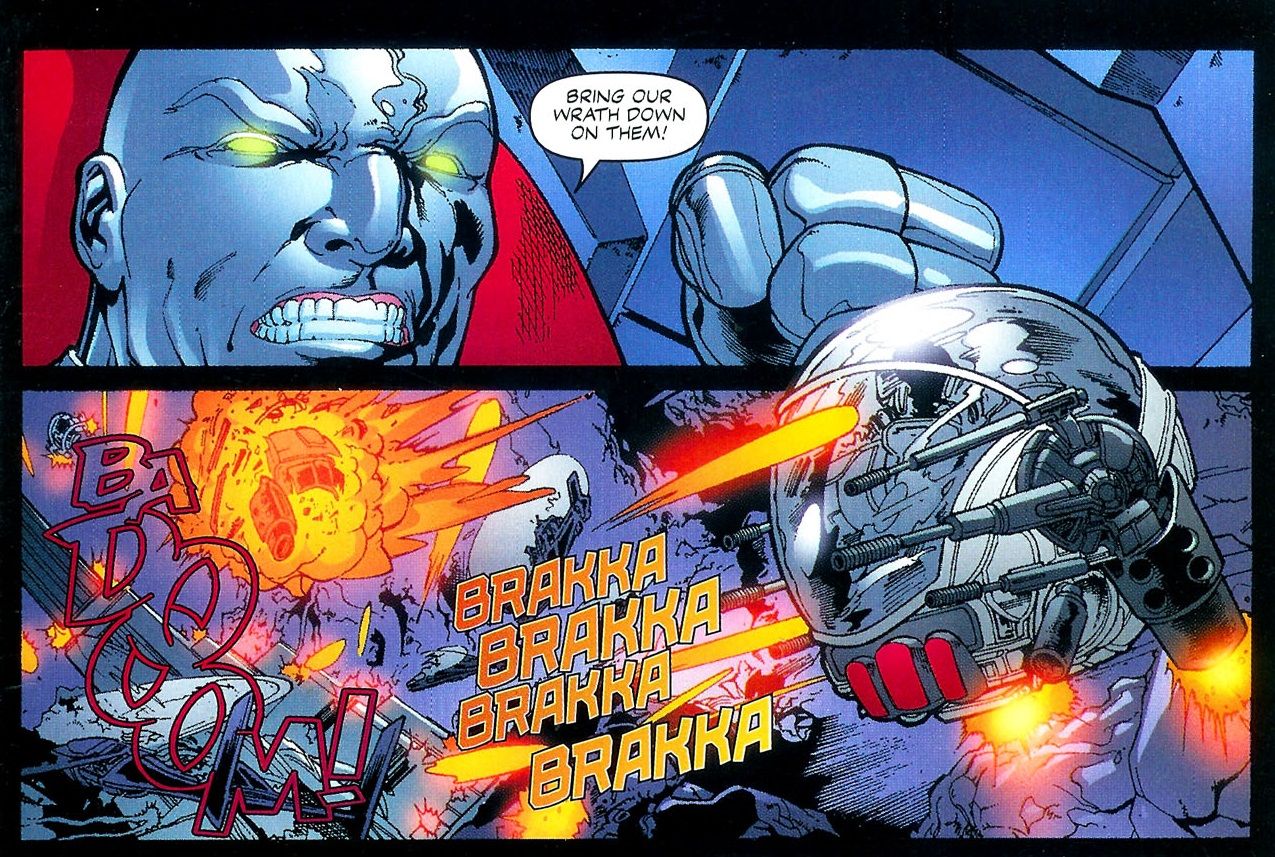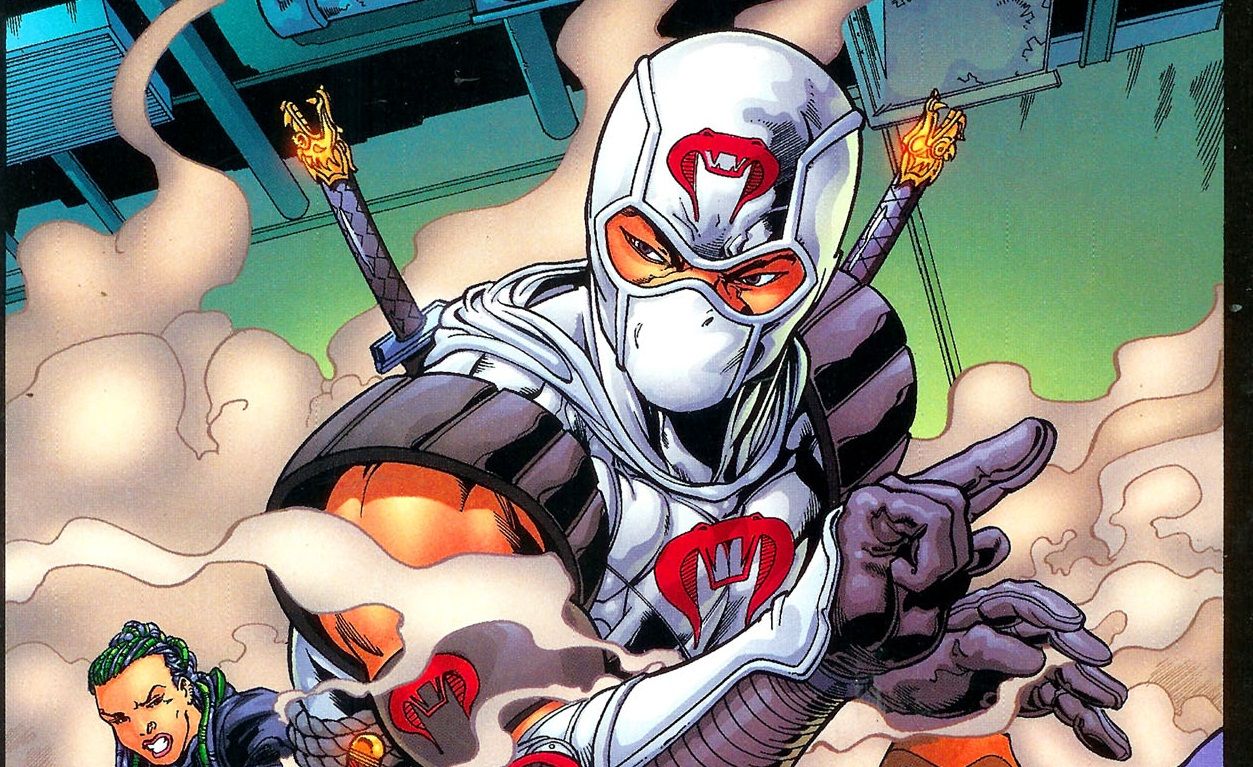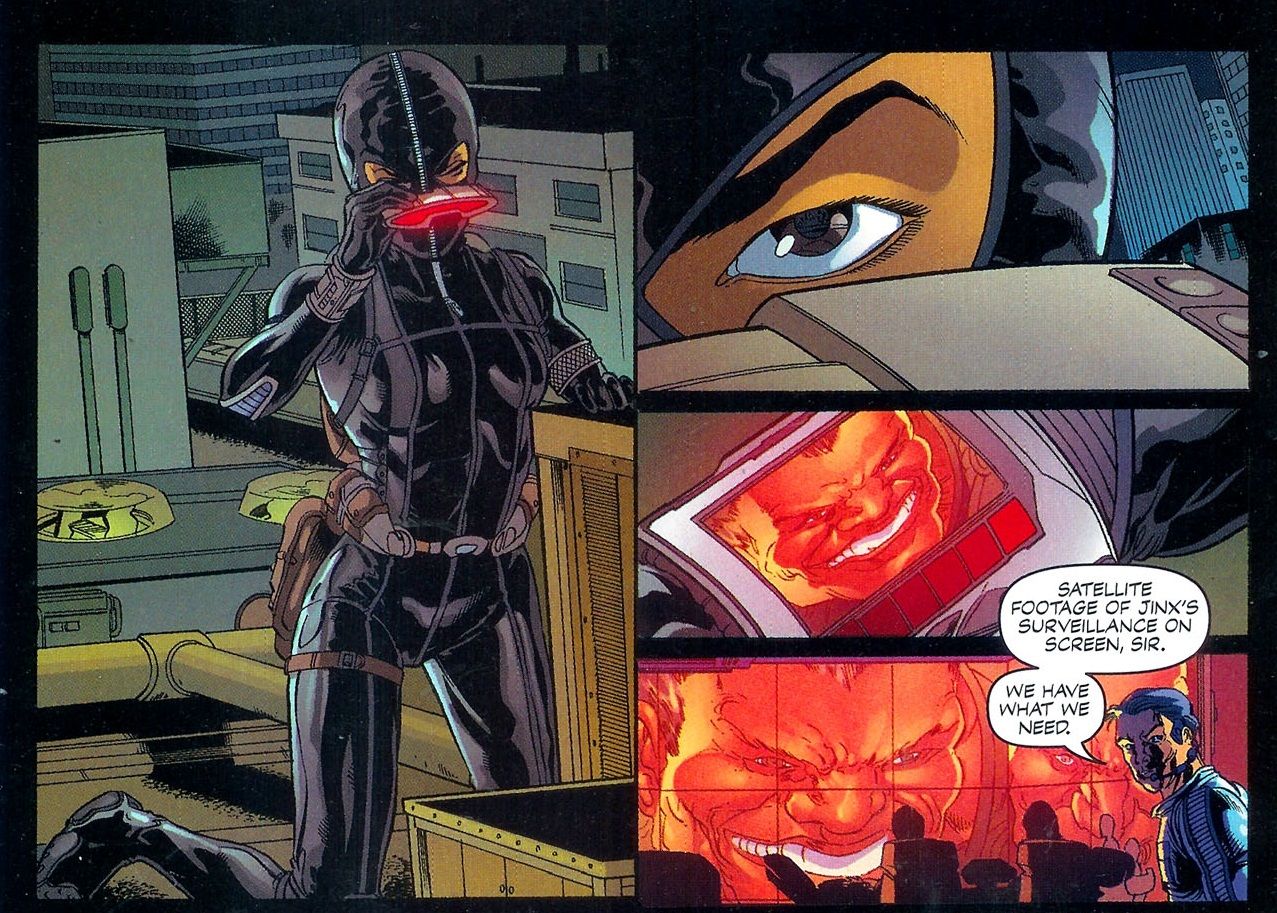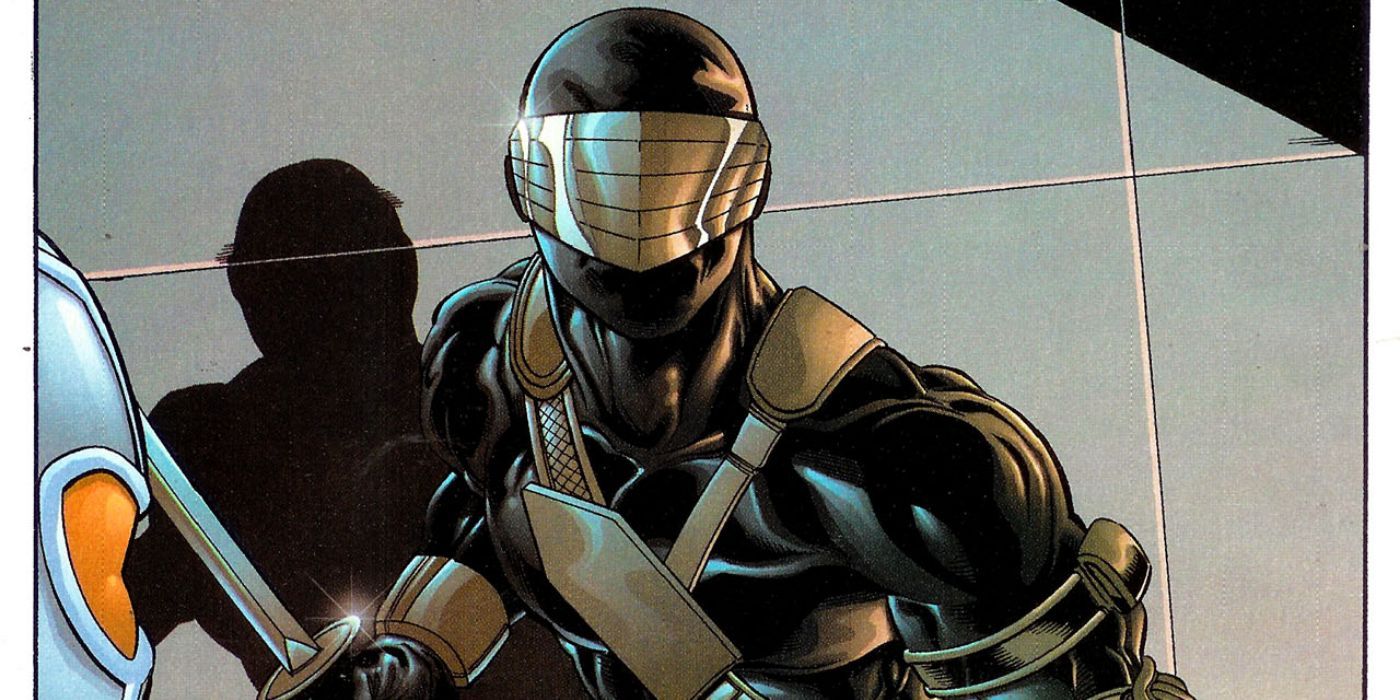Welcome to the 16th installment of Nostalgia Snake, a look at 2000s revivals of 1980s properties; revivals now so old they're also quite nostalgic. (Hence the snake of nostalgia eating itself.) And if you have any suggestions for the future, let me hear them. Just contact me on Twitter. This week, we'll revisit the Devil's Due relaunch of G. I. Joe. This was the hottest new comics release of 2001, but could the tiny publisher maintain its momentum?
The initial four-issue "Reinstated" arc of G .I. Joe -- so successful it retroactively switched from miniseries to ongoing -- hailed the return of 1980s properties to comic shops, a trend that foreshadowed Hollywood's reboot obsession that continues to this day. To reiterate, indie creator Josh Blaylock picked up the G .I. Joe rights from Hasbro at a time when the property's commercial value was unknown, launched it through his Devil's Due Studios (published via Image Comics), and saw incredible success with a debut issue that happened to go on-sale the day after the terrorist attacks of 9/11. Aside from cover artist (and G .I. Joe fan) J. Scott Campbell, none of the creators had proven track records in the industry, making it clear the characters were the true stars of this comic.
A Joe Legend Returns
Campbell's regular stint as cover artist ended with #4, but Devil's Due quickly impressed diehard fans by announcing Mike Zeck would be providing covers for issues #6-9. Zeck's reputation as one of the industry's strongest artists is unchallenged, having established himself on three of Marvel's most successful projects in the 1980s: the Marvel Super-Heroes Secret Wars miniseries that created the industry's "event" paradigm (and also had Zeck designing Spider-Man's black costume), the Punisher miniseries that inspired the trend of gritty, street-level vigilantes, and the "Kraven's Last Hunt" storyline that ran across Marvel's Spider-Man titles, becoming one of the earliest superhero story arcs to stay in print as a trade paperback.
A subset of fandom never paid attention to the superhero material, but they stayed passionate about G. I. Joe and recognized Zeck as the Marvel series' strongest cover artist in the 1980s. Zeck's covers, which ran mostly from issues #24 to #65, are iconic renditions of these characters. Not only is Zeck meticulous about keeping the cast on model and rendering the assorted military paraphernalia properly, but the Joes have often put in truly harrowing situations on the covers, which were sketched out by original series writer Larry Hama. A Zeck cover pretty much demanded a reader pick up the comic and investigate.
Many of Zeck's covers were also featured on the television commercials for the Marvel series, meaning millions of kids unfamiliar with comics were being exposed to Zeck's intense draftsmanship while innocently eating their Fruity Pebbles. Mike Zeck's art is "classic G. I. Joe" by any standard. Larry Hama has stated Hasbro actually grew uneasy about Zeck's cover for issue #40 -- which features Roadblock in the midst of a molar-rattling shootout -- and asked for less violent covers in the future.
The Loose Ends
A Zeck return to G .I. Joe enabled Devil's Due to earn some credibility amongst fandom and boost enthusiasm for the rebooted title's second story arc. Issues #6-9 have the regular creative team of writer Josh Blaylock and penciler Steve Kurth (with Jamal Igle helping out with #8) following up the opening arc, which featured the unexpected revival of the terrorist group Cobra and G. I. Joe's subsequent reinstatement after a real-time absence of six years.
Some elements from the first arc seem perhaps forgotten in this run of issues. There's an ongoing thread about the Pentagon cutting funding of the restored Joe team for reasons General Hawk can't understand. The shadowy cabal of generals known as the Jugglers is revealed as the culprit, yet Hawk was revealed as a Juggler in the opening arc. And even though we're told the team's operating on an impossibly thin budget, the initial idea of a Joe team only consisting of five active members is clearly abandoned now. Numerous Joes pop in and out of the story, which is great for fans who want to revisit the characters, but this (in addition to a new army of "greenshirt" recruits) seems to undermine the "slashed budget" plot.
Blaylock also has Billy, Cobra Commander's son and the protégé of Storm Shadow, reappear at the arc's beginning, offering his aid to the Joes. He then disappears for the rest of the story. Meanwhile, the other adolescent ninja protégé introduced back in the original run, Sean Collins (rechristened Kamakura in this continuity) barely has an introduction but plays a significant role in the concluding issue.
And if readers were expecting any payoff on the Duke/Scarlett/Snake Eyes love triangle introduced in those early issues, it can't be found here, as the three characters have no scenes together. Admittedly, Blaylock might've intended this arc as over when Snake Eyes again proposed to Scarlett in the previous storyline's coda, but that raises the question of why the love triangle was introduced in the first place. (Aside from homaging the Duke/Scarlett flirtation in the '80s cartoon, of course.) What responsibilities Snake Eyes now has as the "Silent Master" are also not addressed in this run of issues, but in fairness, the industry wasn't quite so adamant about trade-friendly runs at the time, so a few dangling subplots isn't necessarily that outrageous.
Let Them Fight
The twist behind "Reinstated's" Cobra revival had Destro betraying Cobra Commander and taking over the terrorist organization…only for this "Destro" to be exposed as Alexander McCullen, the original Destro's never-revealed son in disguise. The second arc opens with Tomax and Xamot escorting a recuperating Cobra Commander to his new headquarters, where he vows vengeance on those who betrayed him.
This vengeance mainly consists of calling upon Storm Shadow to place a beat-down on Cobra "traitors" like Zartan, Major Bludd, and Dr. Mindbender. Cobra Commander then welcomes them back into the fold, confident they've learned their lesson. As the comic is nominally picking up with the Marvel continuity, this means Storm Shadow has been brainwashed into once again serving Cobra (following nearly a decade of stories that had him as a Joe ally, a decision of Hama's later reflected by the toy line). Devil's Due can now have the "classic" villainous Storm Shadow the general audience remembers from the cartoon, while also acknowledging where the comic left off.
Next on Cobra Commander's checklist of revenge is Destro, who will be the first victim of his genetically-enhanced Neo-Vipers. The Commander leads a raid on Destro's home (the "silent castle" from the famous "silent issue" of the original Marvel series), which also provides a guest appearance from fan-favorite villainous Baroness, who remains loyal to Destro. Kurth goes all-out, rendering a battle between Destro's Iron Grenadier soldiers, the Neo-Vipers, and a fleet of assorted Cobra aircraft. The entire sequence might be pure pandering to the dedicated fanbase…but ultimately, so? The Gen X fans putting their $2.95 down for a revived Joe comic are expecting battles like this.
During a standoff with Cobra Commander, Destro orders his son Alexander to show himself. Destro tries his best to prove it was Alexander who led the coup d'état, offering Alexander's hi-tech mask to Cobra Commander as a peace offering, along with the Commander's former cellmate Lilian Osborne.
Keeping up with all of the new and returning characters in the opening arc can be difficult, but Lilian was Alexander's confidant Mistress Armada (treated as A Big Deal New Character, with a striking design, and then fading out of the story). Mistress Armada was introduced in the initial storyline in the guise of "Candy," a member of Cobra Commander's concubine who double-crosses him on Alexander's orders. She was later taken captive by the real Destro and left in a cell with the Commander. Concubines for villains and female characters traded as expiatory offerings was, well, not exactly controversial in early 2000s comics.
New Millennium, New Looks
The return of Storm Shadow permits the creative team to revamp his '80s "ninja pajamas" look for the 2000s. It's a solid design, allowing the character to remain recognizable while also adding some of the excessive ornamentation that's a hallmark of this era. He certainly looks great on the Zeck covers and the painted pieces Devil's Due commissioned for posters and lithographs in the early 2000s.
Even though Hasbro wasn't giving the G. I. Joe property the push it received back in the '80s, new toys were being released in this era. Devil's Due played along, portraying Duke in his latest toy design…but also in a Matrix-inspired stealth suit, one not released as a toy. Hasbro's latest Viper update, the appropriately-named Neo-Vipers also receive the spotlight for an issue. Some new manga-influenced vehicles also appear in the Cobra vs. Destro sequence. Devil's Due apparently had leeway when dealing with Hasbro, as their revamped Storm Shadow bears no resemblance to his 2002 action figure, which reimagined him in a mostly-black outfit.
Another ninja receiving a revamp is Jinx, now sporting, like Duke, a black Matrix-inspired stealth suit. This was also never released as a figure, but it's not a bad look for the character. (And a clear indication Kurth's female figures appear far less awkward in this run of issues.) Not everything inspired by The Matrix is gold, however. The new "greenshirt" Joe soldier designs are not only overly busy but rather dorky looking. And poor Mainframe still resembles every "futuristic" early 2000s cliché heaped onto one design.
"Ninja Kung-Fu Crap"
Pitting agents of Cobra against one another continues a strong tradition from the Marvel series, and the Destro vs. Cobra fight is a highlight of his arc, but if you're talking Joe fan service, you're talking about a Snake Eyes vs. Storm Shadow martial arts duel. While Kurth still struggles at times with rendering heroic faces, this isn't much of an issue for a climactic battle involving the masked Snake Eyes. And Kurth's rendition of Snake Eyes is appropriately cool, evoking some of the best artists of the 1980s Joe era.
G. I. Joe #9 is an all-issue battle between Snake Eyes and Storm Shadow, as the brainwashed ninja has infiltrated the Joes' headquarters on a mission to assassinate General Hawk. (Only called "Tomahawk" once in this arc, so maybe Hasbro was working out those legal issues.) Snake Eyes is supposed to be taking leave time with Scarlett in Atlanta but mysteriously receives word that something's wrong back at headquarters. He's joined by his protégé Kamakura but still finds himself outfoxed by Storm Shadow during the fight. Perhaps as a meta-commentary, the always cantankerous Beachhead declares, "this ninja kung-fu crap is highly overrated" a few pages before he's taken out (off-panel) by Storm Shadow.
The surprising climax to the duel has Storm Shadow slicing Snake Eyes' face, once again scarring the commando, before he escapes inside an elevator. Enraged, Snake Eyes responds by spraying the elevator with Uzi fire, only stopping when warned that he's jeopardizing his teammates. Even then, the implication is that he does so reluctantly. This simply doesn't feel like the noble, emotionally cool character from the Marvel series. Very likely, this was Blaylock's intention, but rather than feeling like something the story's earned, it comes across as cheap shock value.
To be fair to the creators, these "edgy" moments have rarely appeared in the Devil's Due issues. The books were produced with genuine affection for the characters, so the forced attempts at provocation or making the material "less kiddie" aren't really here. It's also hard to imagine any story from Larry Hama portraying Snake Eyes as furiously defensive over his physical appearance or willing to kill his sword-brother -- who he knows is brainwashed -- over the incident. It's a scene that doesn't work.
Is the moment enough to turn fans away from the series? Not likely. It's arguable that there's too much going on, and the stories are often superficial reads, but the Devil's Due G. I. Joe is an entertaining tribute to the property's glory days. The characters and vehicles the fans want to see regularly appear, a cliffhanger always teases something intriguing for the future, and industry greats like Mike Zeck are onboard for fantastic covers. Even as the '80s revival trend reached saturation, G. I. Joe remained competitive.

